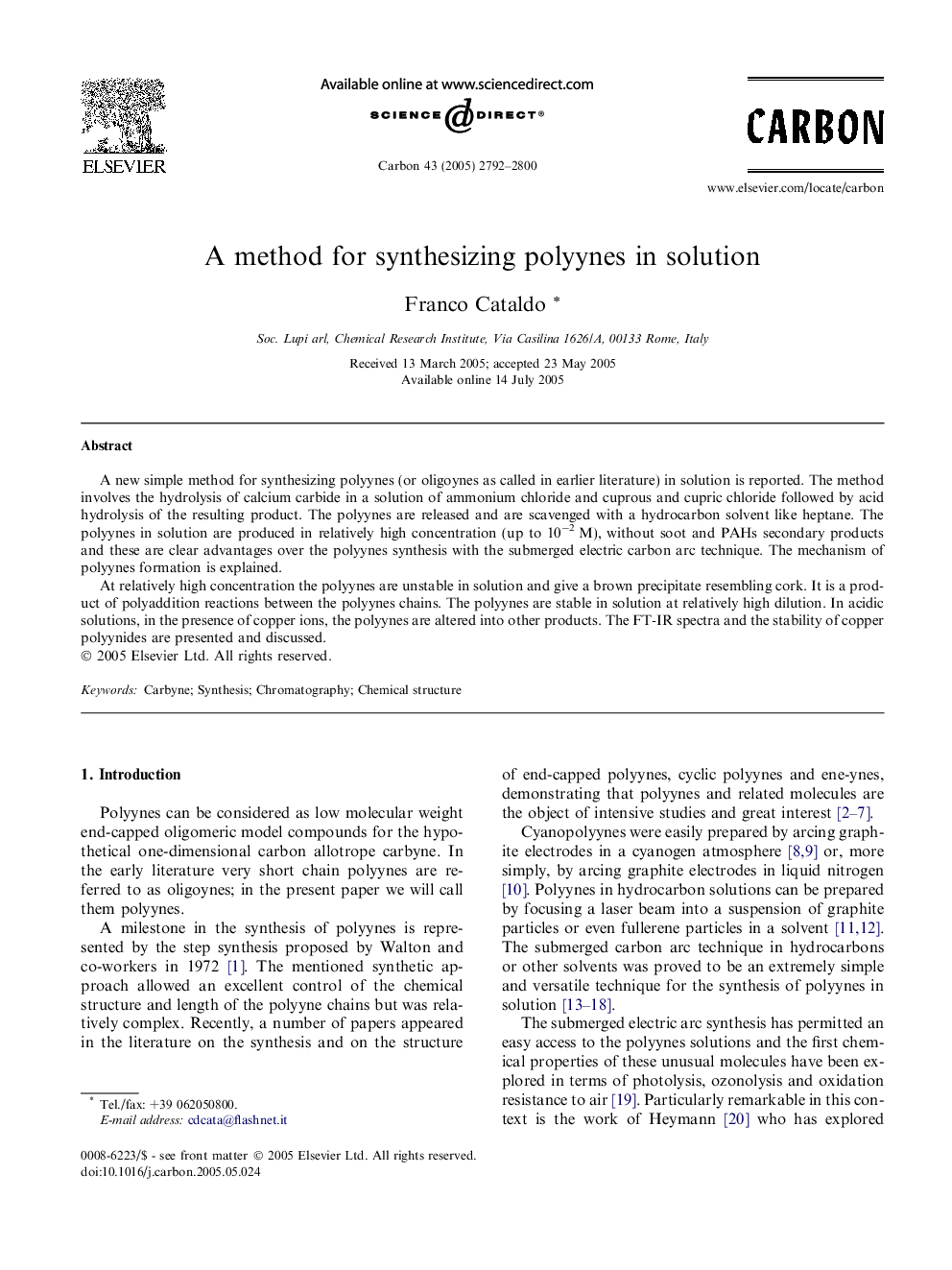| کد مقاله | کد نشریه | سال انتشار | مقاله انگلیسی | نسخه تمام متن |
|---|---|---|---|---|
| 1419528 | 986046 | 2005 | 9 صفحه PDF | دانلود رایگان |

A new simple method for synthesizing polyynes (or oligoynes as called in earlier literature) in solution is reported. The method involves the hydrolysis of calcium carbide in a solution of ammonium chloride and cuprous and cupric chloride followed by acid hydrolysis of the resulting product. The polyynes are released and are scavenged with a hydrocarbon solvent like heptane. The polyynes in solution are produced in relatively high concentration (up to 10−2 M), without soot and PAHs secondary products and these are clear advantages over the polyynes synthesis with the submerged electric carbon arc technique. The mechanism of polyynes formation is explained.At relatively high concentration the polyynes are unstable in solution and give a brown precipitate resembling cork. It is a product of polyaddition reactions between the polyynes chains. The polyynes are stable in solution at relatively high dilution. In acidic solutions, in the presence of copper ions, the polyynes are altered into other products. The FT-IR spectra and the stability of copper polyynides are presented and discussed.
Journal: Carbon - Volume 43, Issue 13, November 2005, Pages 2792–2800